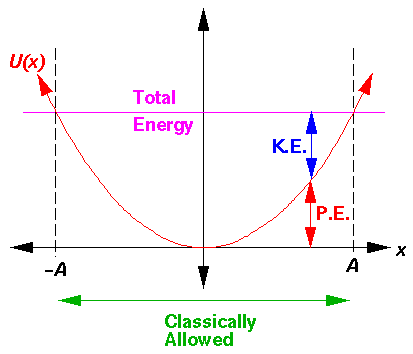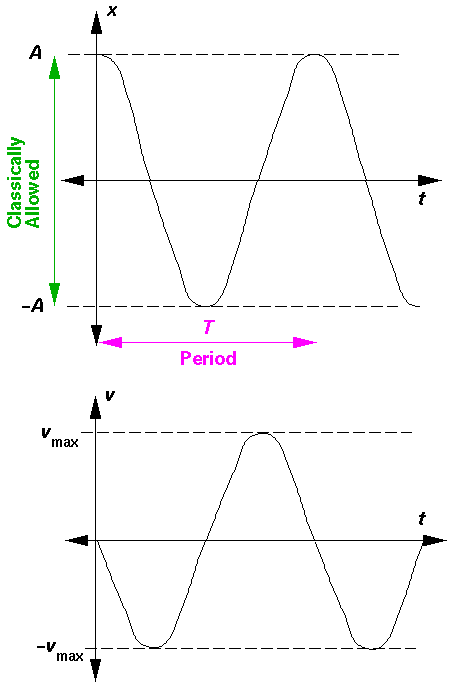

The above diagram plots various the energies involved as a function of position (x) with x=0 being the equilibrium (F=0) location. The line representing "Total Energy" is flat, because total energy is conserved (i.e., is constant). Potential energy (U(x)) is plotted in red. Total energy is the sum of kinetic energy and potential energy: thus kinetic energy is what you have to add to potential energy to get the constant total energy. Kinetic energy must be positive, so the only places the particle can actually go are where U(x)<E. The points on the edge of the allowed region (where U(x)=E, i.e., x=±A) are called turning points. There the kinetic energy is zero, and so the velocity of the particle is zero. Just prior to reaching A, the particle is moving to the right (positive velocity, towards positive x). Just after reaching A the particle is moving to the left (negative velocity, towards negative x). At A the particle is momentarily at rest. The below plots the position and velocity as functions of time.
